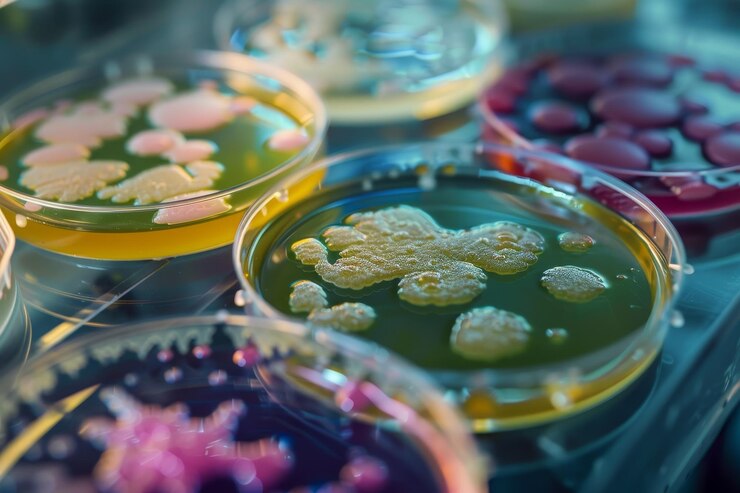Topical application of certain probiotic bacteria, such as Lactobacillus reuteri and Lactobacillus rhamnosus, can protect skin cells from Staphylococcus aureus infection by preventing the bacteria from adhering to the cells, potentially aiding in the prevention of skin infections.
A research group led by Tessa Prince of the University of Manchester (2012) reported that recent studies have shown that probiotic bacteria, specifically L. reuteri, can protect human skin cells from the harmful effects of the pathogen S. aureus. The protective mechanism involves competitive exclusion of the pathogen from binding sites on the cells. This suggests that topical application of probiotics could prevent skin infections.
SUMMARY
- When normal primary human epidermal keratinocytes (NHEK) were exposed to a pathogen and L. reuteri, the probiotic protected the cells from the effects of the pathogen, as indicated by the significantly higher percentage of viability of S. aureus-infected NHEK in the presence versus absence of L. reuteri (Fig. 1a; see Fig. S2 in the supplemental material)
- The protective effects of the probiotic were variable between different species because the protection afforded by L. reuteri was greater than that provided by L. rhamnosus
- L. reuteri can protect keratinocytes from the pathogenic effects of S. aureus through exclusion and competition for binding sites
ABSTRACT
Recent studies have suggested that the topical application of probiotic bacteria can improve skin health or combat disease. We have utilized a primary human keratinocyte culture model to investigate whether probiotic bacteria can inhibit Staphylococcus aureus infection. Evaluation of the candidate probiotics Lactobacillus reuteri ATCC 55730, Lactobacillus rhamnosus AC413, and Lactobacillus salivarius UCC118 demonstrated that both L. reuteri and L. rhamnosus, but not L. salivarius, reduced S. aureus-induced keratinocyte cell death in both undifferentiated and differentiated keratinocytes. Keratinocyte survival was significantly higher if the probiotic was applied prior to (P < 0.01) or simultaneously with (P < 0.01) infection with S. aureus but not when added after infection had commenced (P > 0.05). The protective effect of L. reuteri was not dependent on the elaboration of inhibitory substances such as lactic acid. L. reuteri inhibited adherence of S. aureus to keratinocytes by competitive exclusion (P = 0.026). L. salivarius UCC118, however, did not inhibit S. aureus from adhering to keratinocytes (P > 0.05) and did not protect keratinocyte viability. S. aureus utilizes the α5β1 integrin to adhere to keratinocytes, and blocking of this integrin resulted in a protective effect similar to that observed with probiotics (P = 0.03). This suggests that the protective mechanism for L. reuteri-mediated protection of keratinocytes was by competitive exclusion of the pathogen from its binding sites on the cells. Our results suggest that use of a topical probiotic prophylactically could inhibit the colonization of skin by S. aureus and thus aid in the prevention of infection.
RESULTS
- The application of S. aureus at physiologically relevant concentrations killed 69.5% of NHEK within 24 h. In contrast, none of the strains of lactobacilli significantly affected the viability of NHEK under the same conditions, suggesting that probiotics were well tolerated by keratinocytes.
- When NHEK were exposed to both pathogen and L. reuteri, the probiotic protected the cells from the effects of the pathogen, as indicated by the significantly higher percentage of viability of S. aureus-infected NHEK in the presence versus absence of L. reuteri.
- The protective effect of L. reuteri against S. aureus-induced cell death of keratinocytes could result from several different mechanisms. One of the mechanisms by which L. reuteri protects keratinocytes appears to be linked to the ability of L. reuteri to prevent adhesion of S. aureus
CONCLUSION
This article has investigated the ability of three strains of lactobacilli to protect keratinocytes from the effects of the common skin pathogen S. aureus. Probiotic lysate can protect skin cells from Staphylococcus aureus infection by preventing the bacteria from adhering to the cells, potentially aiding in the prevention of skin infections.
REFERENCES

Leave A Comment